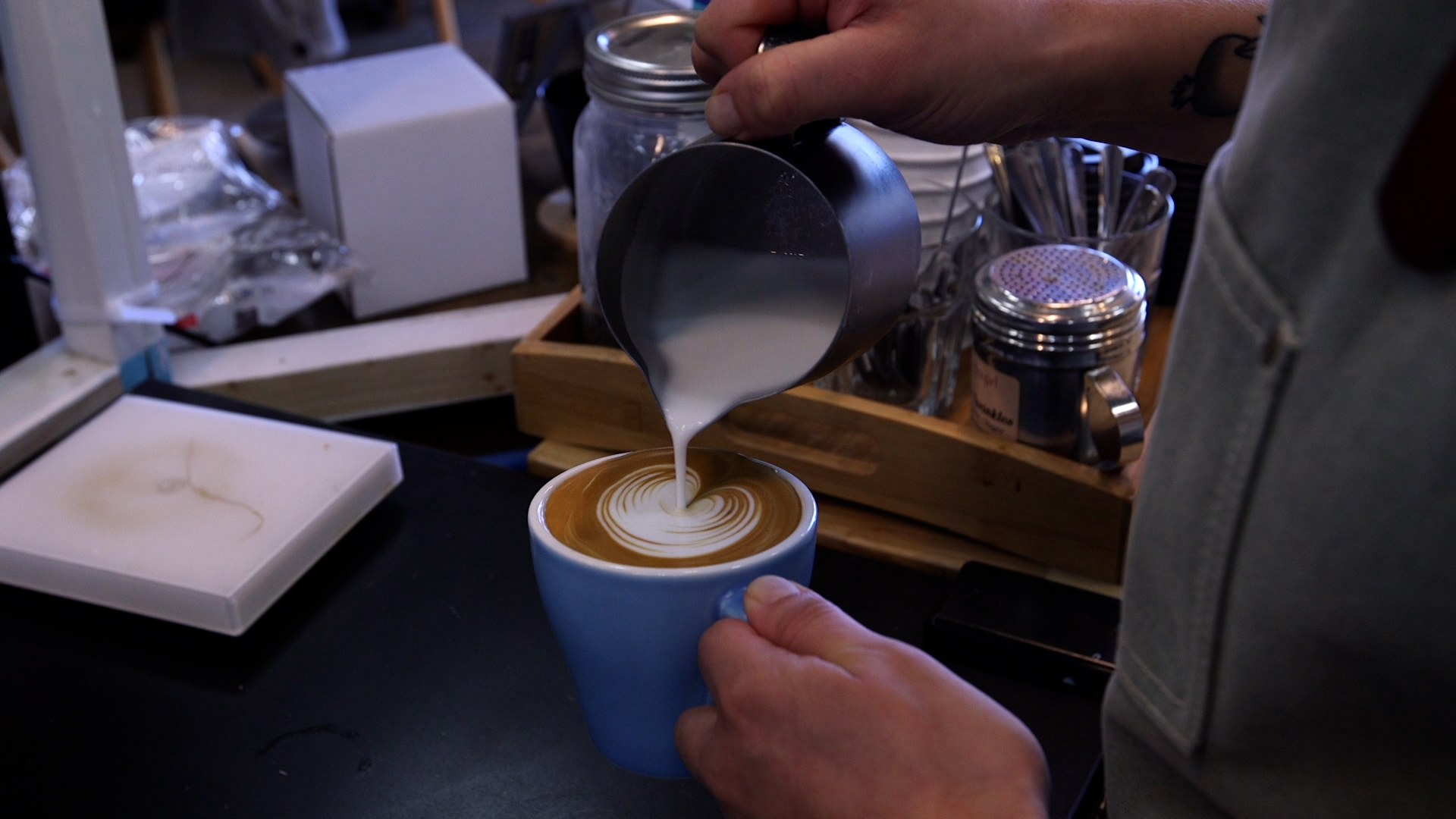Coffee connoisseurs know how important water is to the perfect cup of java.
Just ask Ply Pasarj, a national award-winning barista and co-owner of Rogue Wave Coffee Roasters. He travels the world looking for the best beans, from South East Asia to South America, but admits the coffee itself is only part of the equation.
“Ninety-eight per cent of your cup of coffee is water, and only two per cent is what you get from the coffee bean,” he says. “If you start with really good water, you usually will end up with better coffee.”
Pasarj should know. In addition to running his coffee business, he is a PhD candidate in biochemistry at the U of A, purifying bioactive molecules from marine organisms that could one day be used in immunosuppressant drugs for human organ transplants.
In locations such as Edmonton, city tap water is far too hard for best results in coffee, containing high levels of minerals such as calcium and magnesium, as well as bicarbonates that drive up pH levels.
You can remove them with commercial purification systems, but they have their limitations, says Pasarj. The reverse-osmosis process ends up reintroducing tap water to the final mix, with little control over mineral content.
For a champion barista like Pasarj, that’s just not good enough. While there is no hard and fast rule, he aims for coffee brewed with water at 84 C and between 80-100 parts per million of minerals. Anything above 150 parts per million can give coffee a muted, chalky taste, he says. Chemical composition can also play a role.
One day he happened to explain his filtration problem to one of his regular customers — Ian Smith, who then worked for the Faculty of Engineering’s Office of Advancement. Smith suggested it could be a perfect project for mechanical engineering students, and Pasarj agreed to sponsor it.
Earlier this year the challenge was assigned to a group of five engineering students as a final-year capstone project. They could not have been more delighted with their task.
“All five of us are big coffee lovers,” says group leader Evyn Fritzler. “I’ve worked in cafes, and I knew of Rogue Wave. Ply has done really well in international competitions, so it felt like meeting a celebrity.”
Since January the team has been hard at work designing a filtration system that automatically regulates the mineral content — aiming for between 30 and 110 parts per million.
“The goal of the project is to redesign a water filtering and treatment process and package it so it can be simply installed and maintained, and easily automated,” says Fritzler.
They have had to learn much of the water chemistry on their own, she says. But one of the biggest challenges has been finding components already on the market — such as piping, valves and a pump — and adapting them to fit their own design.
They’re also planning to include two storage reservoirs in the system, one containing a premium source for Rogue Wave’s espresso machine, the other holding water with higher mineral content for drip coffee and other uses.
“Because you’re extracting coffee with higher pressure in the espresso machine, the water will generally be a little softer than you’d use in your pour-over or coffee maker at home,” says Pasarj.
Once the group completes its design this month, it will hand over the plans to Pasarj, who will then decide whether to build a prototype for his shop, and perhaps eventually a smaller model for home use.
“I meet the group almost every week to see their progress, and it's pretty impressive,” he says. “I'm really looking forward to what they come up with. The components need to be commercially available, so it may be easy to spend a weekend building it.”
For the group, the assignment offered a new take on what engineering can be, says Fritzler.
“It showed us you can help out small businesses, or maybe start generating ideas on your own for startups or something like that.”
